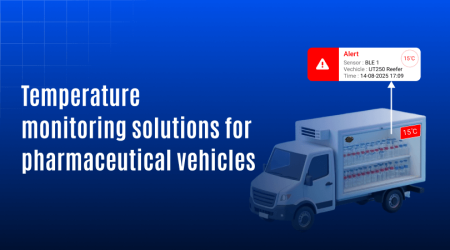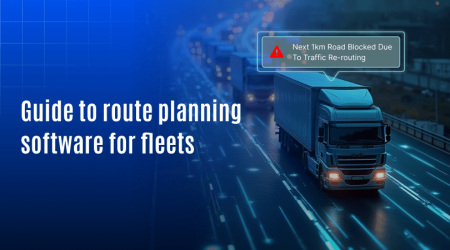Comprehensive Advantages of Axle Load Monitoring

Overloaded vehicles pose a serious risk to road safety and fleet operations worldwide. Studies show that up to 30% of heavy truck accidents result from axle overload, causing millions of dollars in damages and countless injuries every year (Source: International Transport Forum, OECD). Beyond safety concerns, overloading accelerates vehicle wear and tear, increasing maintenance costs by as much as 25% and reducing fuel efficiency by up to 15%.
To address these challenges, more fleets are turning to axle load monitoring systems. These systems provide real-time data that ensures compliance with legal weight limits, enhances driver accountability, and improves operational efficiency by optimizing load distribution.
In this blog, we will explore the comprehensive advantages of axle load monitoring technology and how it can help fleets worldwide reduce costs, improve safety, and extend vehicle lifespan.
Understanding axle load monitoring
What is an axle load monitoring system?
At its core, an axle load monitoring system is an advanced technology designed to measure and report the weight exerted on each axle of a vehicle. This system is pivotal for maintaining legal weight limits and optimizing vehicle performance. Understanding its functionality is the first step in appreciating the depth of its capabilities and the breadth of its benefits.
The Mechanics behind the technology
The system works through sensors installed on the axles, which continuously measure the load and transmit this data in real-time. This allows for immediate adjustments and decisions, ensuring that each vehicle operates within safe and legal parameters.
Safety first: preventing accidents and protecting lives
The role of axle load monitoring in accident prevention
Overloading is a notorious culprit behind many road accidents. An axle load monitoring system ensures that vehicles are not burdened beyond their capacity, significantly reducing the risk of tire failures, brake failures, and loss of control. This section will discuss real-life scenarios and statistics to illustrate the system’s impact on road safety.
Protecting assets and lives
Beyond preventing material damage to vehicles, the foremost benefit is the protection of human lives both the drivers and other road users. By maintaining optimal load, the system plays a crucial role in avoiding catastrophic accidents, underscoring its importance in any fleet safety strategy.
Operational efficiency: doing more with less
Maximizing vehicle utilization
An axle load monitoring system provides real-time data that fleet managers can use to optimize load distribution and vehicle assignments. This ensures that each trip is as efficient as possible, reducing unnecessary wear and tear and extending the vehicle’s service life.
Fuel efficiency and cost savings
Overloading not only risks safety but also affects fuel consumption. This section will explore how maintaining optimal weight can lead to significant fuel savings and, consequently, lower operational costs.
Maintenance and longevity: extending vehicle life
Reducing wear and tear
Constant overloading accelerates the wear and tear on vehicle components. By ensuring vehicles are not overloaded, the axle load monitoring system helps in reducing maintenance requirements and costs. Detailed examples and comparisons will illustrate the long-term benefits of this reduced wear and tear.
Enhancing vehicle longevity
Vehicles that aren’t overstressed tend to have a longer operational life. The system helps maintain vehicle integrity by preventing overloading and reducing unnecessary stress on key components. This, in turn, extends the vehicle’s lifespan and delivers a better return on investment.
Compliance and reputation: navigating legalities and public perception
Staying within legal limits
Overloading is not just unsafe; it’s also illegal in many jurisdictions. This part will delve into the legal implications of overloading and how the axle load monitoring system helps in maintaining compliance, avoiding fines, and preventing legal complications.
Building a responsible brand image
Companies that adhere to safety and legal standards are often viewed more favorably by customers and partners. This section will discuss how using an axle load monitoring system can enhance a company’s reputation as a responsible and reliable operator.
A greener approach to fleet management
Lowering fuel consumption and emissions
Vehicles with optimized loads consume less fuel and, in turn, emit fewer pollutants. This section will detail how using an axle load monitoring system aligns with global efforts toward environmental sustainability and can improve a company’s environmental footprint.
Promoting sustainable practices
Adopting technologies that contribute to environmental sustainability is not just good for the planet; it’s also increasingly becoming a business imperative. This part will discuss how incorporating an axle load monitoring system into fleet operations can be part of a broader strategy for sustainable growth.
Data-driven insights: harnessing information for better decisions
The Power of real-time data
With an axle load monitoring system, fleet managers have access to a wealth of real-time data. This section will explore how this data can be used for immediate decision-making and long-term strategic planning. It leads to more informed and effective management.
Analytics and reporting
Beyond real-time data, the system also provides detailed analytics and reports. These offer deeper insights into load patterns, vehicle performance, and other key metrics.This part will discuss how leveraging this information can lead to continuous improvement and competitive advantage.
Enhancing driver accountability and skill
Fostering a culture of responsibility
An axle load monitoring system doesn’t just monitor vehicles; it also encourages drivers to be more accountable for safe and efficient loading practices. This section will discuss how the system can be used as a tool for promoting a safety-first culture among drivers.
Targeted training and improvement
Identifying areas where drivers may need additional training is crucial for continuous improvement. This part explains how system data helps tailor training and boost driver performance.
Conclusion
Incorporating an axle load monitoring system is not merely an operational upgrade; it’s an investment in the future of your fleet. As we’ve explored, the benefits extend far beyond weight checks. It offers enhancements in safety, efficiency, compliance, environmental responsibility, and much more.




